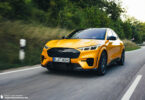With Rocks-e, Opel present an EV that’s classified as a light quadricycle in the EU. Can it still pass as a car? Definitely not, even though it might look like it at first glance. We put the little cube to the test to find out whether it’s a viable alternative to your moped, cargo bike or public transport.
You can find all electric Cars in our big EV special “Which is the best electric car of 2023?“, where you can also check out our personal EV buyer’s guide – free of charge!

What is it? Is it a scooter with 4 wheels, 2 seats and a roof, a car that looks like it’s been compressed, a toy? The cute Opel Rocks-e looks like something designed in an animation studio for the latest Minions franchise, but it’s actually a four-wheeled scooter claiming to offer the comfort and convenience of a car. You could just say it’s a drivable cube for the city. With an L6e – which translates to light quadricycle in human language – vehicle classification in the EU and a top speed of 45 km/h, you can drive it with a moped driver’s licence, which you can get at 15 in Germany. Prices start at € 7,990 for the basic model. According to Opel, the Rocks-e is an SUM, a Sustainable Urban Mobile, and an exact copy of the Citroën Ami, Opel’s sister brand. As such, it’s meant to serve as an alternative to a scooter or using public transport. The maximum range is 75 km, and it’s got a continuous rated output of 6 kW. So, it’s not comparable to a standard EV. But the Rocks-e doesn’t claim to be a car!
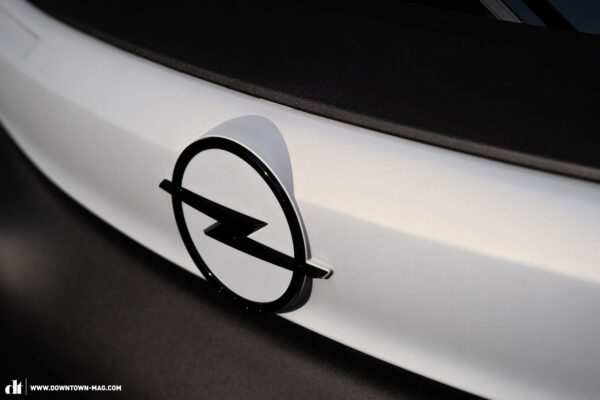

We tested the € 8,790 Opel Rocks-e Tekno, kitted out with extras like the hubcaps (fancy that!), practical features in the interior, and neon yellow accents. The dashboard is equipped with electric yellow storage boxes that remind us of LEGO DUPLO building blocks. There’s a colour-matched smartphone holder too. Included with the Tekno edition is a Bluetooth Soundbox that fits neatly into a dedicated holder and can be linked to your smartphone. Speaking of Bluetooth and connectivity, the Tekno can be connected to your smartphone via the MyOpel app, providing information about the remaining charge time, state of charge, and mileage.


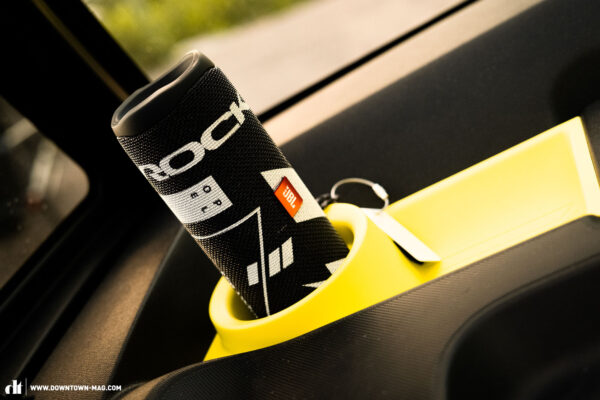

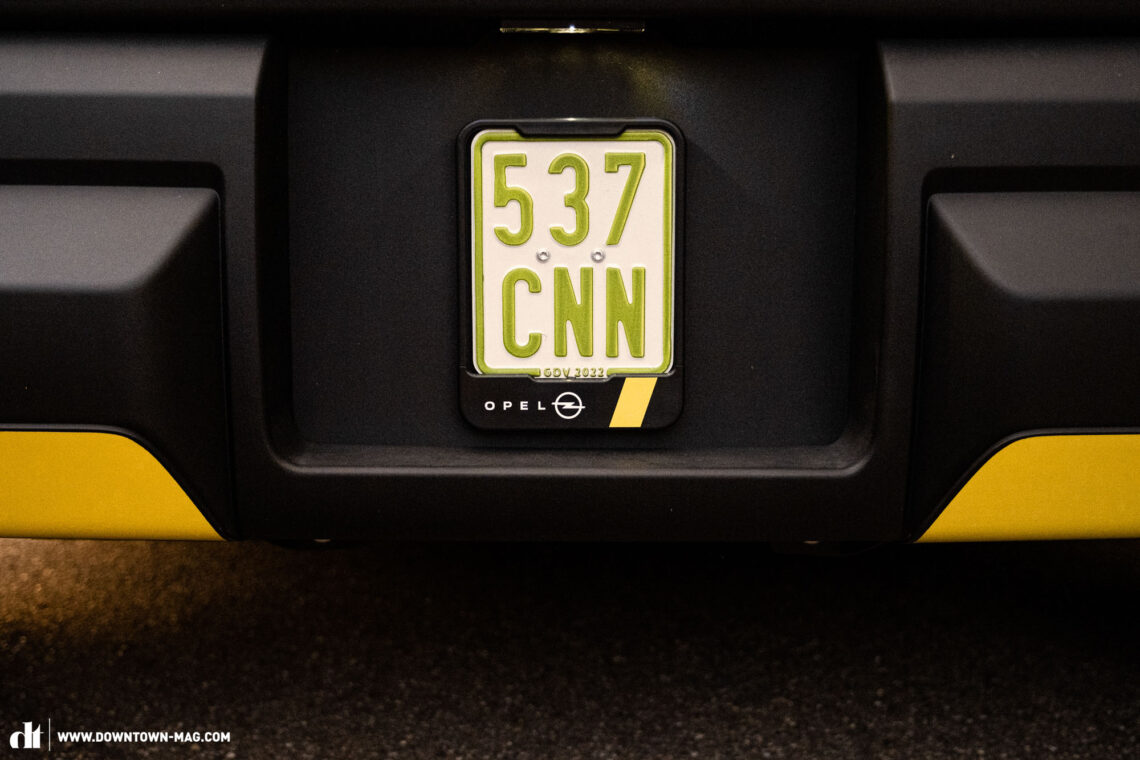
What is a light quadricycle? The Opel Rocks-e is classified as a light quadricycle, which is the EU vehicle class L6e. Vehicles of this class have a top speed of 45 km/h and a maximum output of 6 kW. In Germany, you need an AM category driver’s licence to be allowed to drive one of these vehicles, which you can get from the age of 15. Moreover, category L6e vehicles are allowed a maximum of two seats. To be road legal in Germany when driving a light quadricycle, you also need a moped type registration plate. As such, it doesn’t have to go through a roadworthy test, doesn’t require a vehicle licence and you don’t have to pay motor vehicle tax.
The Opel Rocks-e Tekno – A minibus for the Minions
As we all know, size is relative and a question of perspective. If you look at it from the outside, the Rocks-e seems tiny. Measuring just 2.41 metres long and 1.39 metres wide, it’s 40 cm narrower than a MINI and 25 cm shorter than a Smart EQ Fortwo. With a turning circle of 7.2 m, however, it can’t beat the legendary 6.95 m turning circle of the Smart EQ Fortwo.
When you first see the Rocks-e, you might be confused as to which is the front and which is the back. Fortunately, Opel put a head badge on the front to avoid confusion. That said, there’s a smart reason behind this design, as it allows Opel to manufacture identical parts for the front and back of the car, which reduces production costs significantly. This same concept is applied to the doors, which open in opposite directions and therefore don’t require hinges on different sides, so Opel must produce just one door. The driver’s door opens to the front whereas the passenger door opens to the back like a regular car door.


Despite its miniature size, the Opel Rocks-e would make a perfect bus for a horde of Minions. Overall, it wouldn’t look out of place in a Minion film: the Rocks-e is compact, unconventional looking and just cute. Sitting inside it, you get the sense that you’re sitting inside a giant Dinky Toy. The interior is more spacious than you might expect when looking at it from the outside, feeling roomy yet surreal – you could easily picture a Minion in the passenger seat. The windows provide a 360-degree view, which is underlined by the panoramic roof. Seeing as you’re sat right behind the rear window, the Rocks-e hasn’t got a trunk and there’s little room behind the headrests. By moving the passenger seat even further to the back, however, Opel have increased the leg room to accommodate your luggage up front – in total, the Opel Rocks-e is said to offer a luggage capacity of 63 litres. They’ve also included a convenient hook on the dashboard to hang your shopping bag or backpack. The large cargo nets in the doors can be used for smaller items. There are straps to open and close the doors from the inside, leaving the Rocks-e without door handles, and giving it a race car feeling. A toy race car, that is.
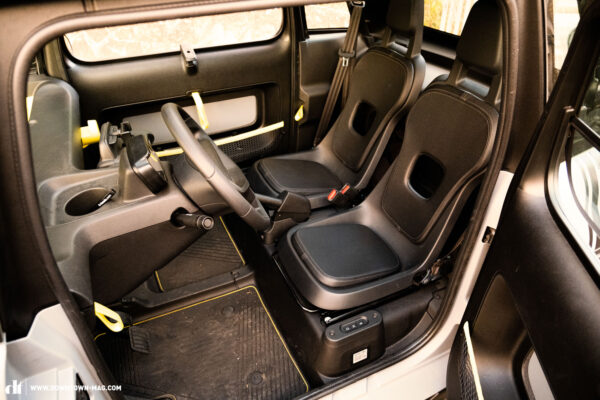



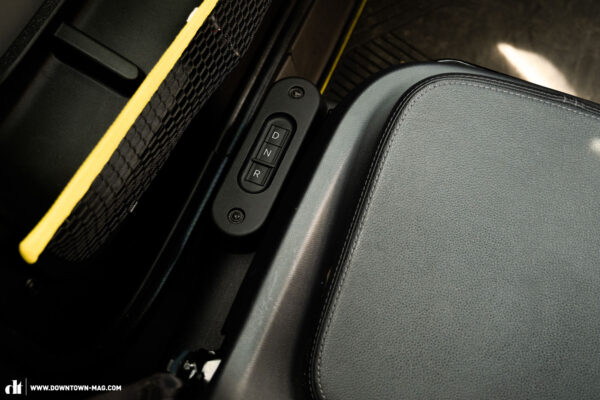
Opel Rocks-e – It doesn’t get more minimalistic than this
Just like a Minion, the Rocks-e is a simple thing: stripped down to the bare basics. So much so you could almost call it ascetic. There’s no radio, not to mention a connectivity system. Instead, there’s a smartphone mount and a USB plug, which will come in handy, as you must use your smartphone to control almost everything, including music and navigation. Navigation comes with an important caveat, though. Since the Rocks-e isn’t classified as a motor vehicle and has a top speed of 45 km/h, it’s not permitted on German highways or expressways (regulations might vary in your country, so be sure to check your local laws), which you can’t specify in Google Maps. Now, we mentioned music, right? What looks like a cupholder above the steering wheel is meant for the Bluetooth speaker, which is included with the Tekno model, but if your portable speaker fits, you might just as well use that. Aircon or ventilation? Nope. All you get is windows that tip open to the outside, and a fan that’s hardly capable of demisting the windshield. Further qualitative lowlights include the small rear view mirror and the windscreen wipers – you can see that Opel tried to save wherever they could when designing the Rocks-e. The display behind the steering wheel provides the most important data: range, speed, the selected gear, and state of charge. Unfortunately, it’s difficult to read in direct sunlight. Alternatively, you can link the car to the MyOpel app on your smartphone, giving you access to live data such as the remaining charge time, state of charge, and mileage. The gear selector is positioned to the bottom left of the driver’s seat, which is somewhat awkward. There’s not much to speak of in terms of insulation, hardly reducing the sound of the electric motor or other vehicles. But that’s no different on a scooter. At least you don’t have to wear a helmet when driving the Rocks-e.
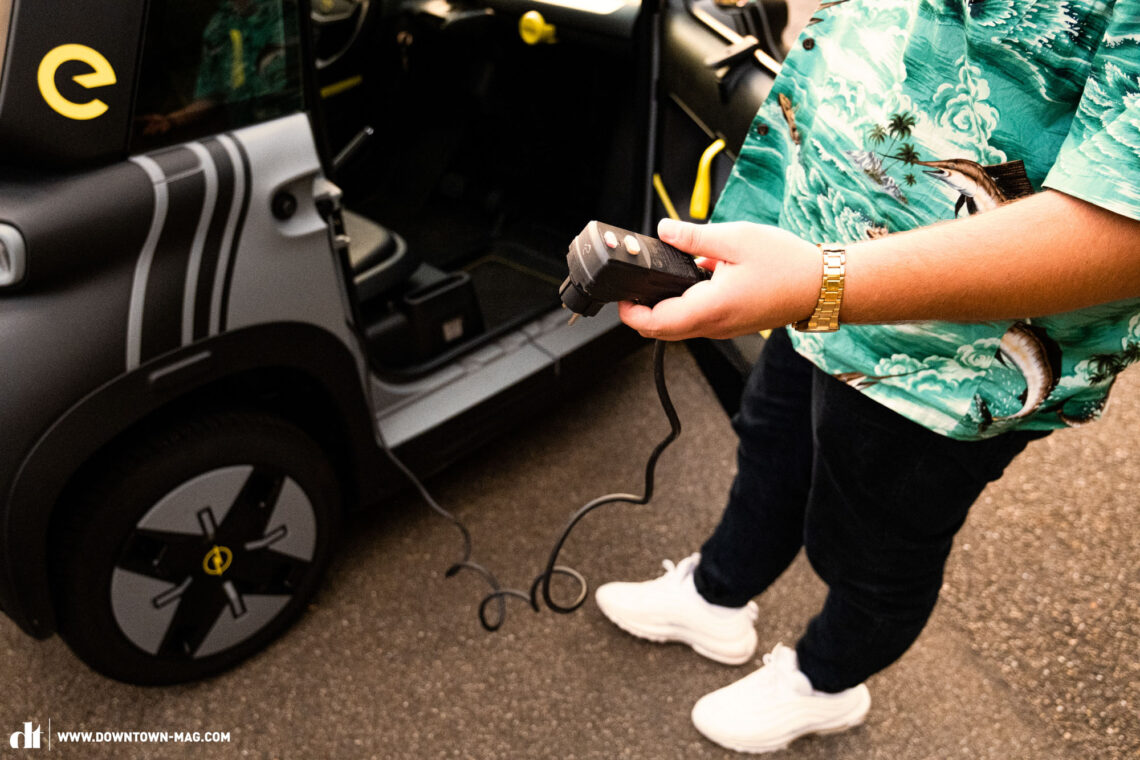
Smart: the charging cable gets stored in the door. It takes just 3 hours to charge the battery from 19% to 80% capacity using a standard household power outlet. The cable is about 3 m long, and Opel advise pulling it all the way out of the door when charging to avoid overheating. Unfortunately, the cable doesn’t retract automatically when you’re done charging the way it does on most vacuum cleaners, for example, and you must stuff it back into the door manually. Doing so isn’t much fun, especially when it’s raining and you’re left wrangling with the dirty and wet cable. Once you’ve got the cable back in the door, you’ve got to be careful of stuffing the plug too far into the opening, as that will make fiddling the cable back out a lot more difficult. The Rocks-e can be charged at 2.3 kW and the battery hidden underneath the seats has a capacity of 5.5 kWh, providing a maximum range of 75 kms. This doesn’t compare to the other EVs on test, but it’s not a car. It’s enough for most errands and inner city jaunts.
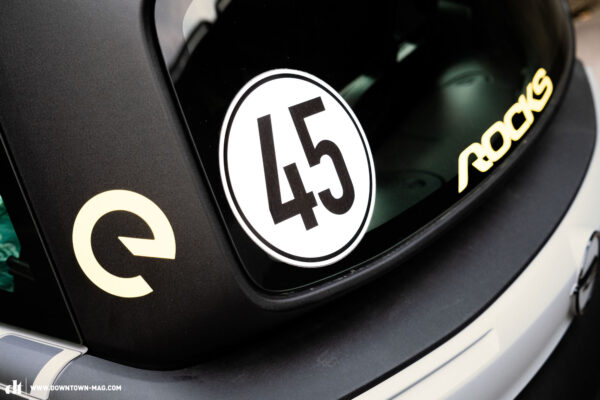


The Opel Rocks-e Tekno just wants to play
What about fun? Is the Opel Rocks-e a joy to drive? The answer is yes and no. The car that isn’t actually a car is fun because of the things it doesn’t have. It exudes Minion vibes (yep, that’s the fourth time we’ve mentioned Minions, if you’re keeping track 😉 ), making you feel like you’re a kid again, and you’ll enjoy the positive attention it garners. Cruising through the city, we got more looks than we did in a Porsche Taycan – admittedly, it isn’t anything special to see a Porsche around Stuttgart with its headquarters just around the corner. People are curious and strike up conversations wanting to know more about the car. And then you can feel really cool when you explain that it isn’t really a car. Perhaps that is what we found disappointing about the Rocks-e’s handling. You’d expect a go-kart feeling, but you’ll be let down. It’s got a firm ride, but it isn’t sporty, and the inside wheels tend to lift when taking a corner too fast. On long uphills, you can feel the motor slowing down, often reducing the top speed to 30 km/h when things get steep as it downregulates the output to prevent overheating. As the road levels out, the motor takes some time to reset and produce its regular output. If you live in a flat city, the Rocks-e performs well for a vehicle of this class, but it can get a little frustrating in a hilly place like Stuttgart. Things get critical beyond city limits: the Rocks-e doesn’t make much sense on country roads since its slow speed turns it into a hindrance. In that case, the Rocks-e tends to have a line of cars backed up behind it, like a tractor driving from one farm to the next. Put positively, you’ll learn to be humble and enjoy a slower pace, though you almost feel guilty for holding up the traffic, and there’s no way not to feel any pressure when you’ve got an 18-wheeler or a bus towering behind you as you crawl along. However, we were never honked at or scolded on our test drives – perhaps it’s because of the 45 km/h sign on the rear windshield. At worst, people felt sorry for us, at best, they just thought it was cute. Welcome to the Minions!


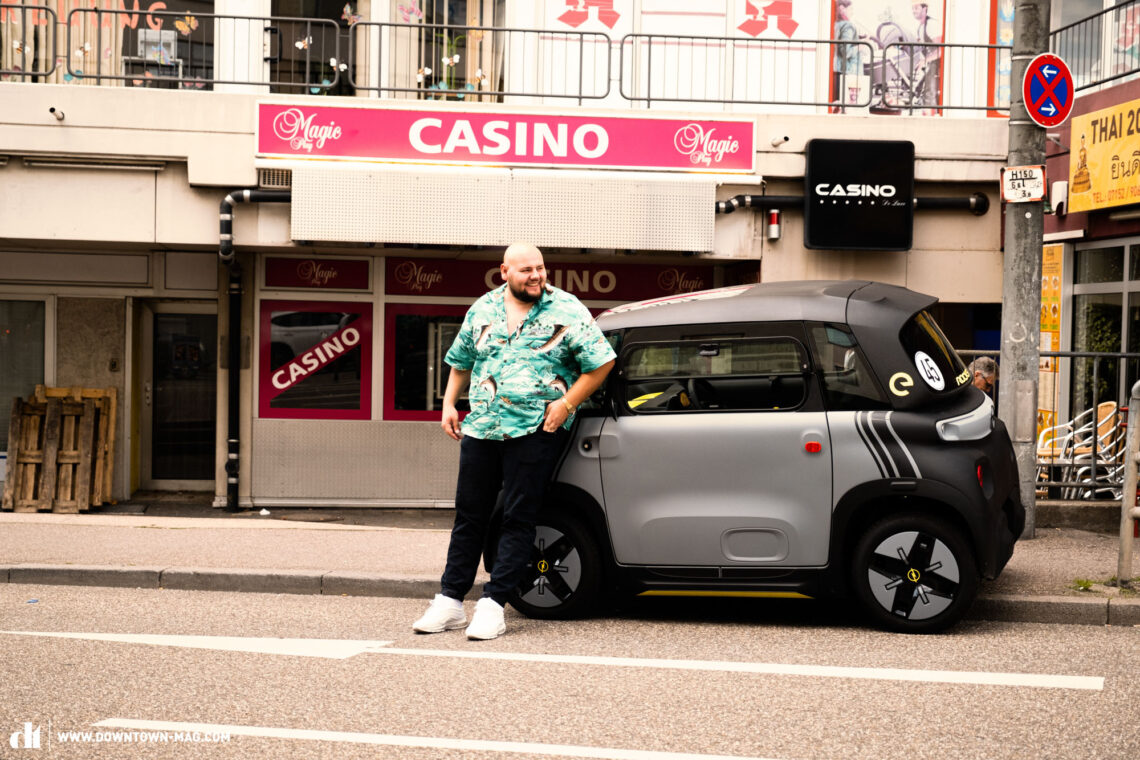
The Opel Rocks-e is very cleverly and economically designed, though they overdid it on the cost cutting measures. At almost € 8,000 for the basic model, it’s rather expensive, too, especially as a first vehicle for a 15-year-old. It provides a very limited use case, and its advantages aren’t immediately evident. For fans of e-mobility who’ve got the cash to spare, it could make for a cool inner city toy, functioning as a cargo bike replacement for short trips.
Tops
- small and simple
- Minion vibes
- more comfortable (weather protection) than a scooter
Flops
- expensive
- very limited use case
- not recommended routes beyond the inner city
- charger cable storage needs improvement
- cheap-seeming parts like the rear view mirror and windscreen wiper
All tested e-cars: City Transformer Prototyp | Fiat 500e | Honda e | KIA EV6 | Opel Rocks E | Polestar 2 | Porsche Taycan | Smart EQ Forfour | Tesla Model 3 Dual Motor Long Range | VW ID.3 | VW ID.BUZZ
Words: Susanne Feddersen Photos: Simon Hänle




